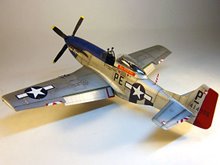
Now that we covered different types of RC plane models, we can talk about the flying technique. Before that i should explain some basics of aerodynamics. Don't worry i'm gonna keep it short. First you have to understand why and how an airplane flies. Some of you probably now what airplane wing looks like. For those of you who don't, the picture on the right shows the wings profile. The profile is the shape that you see when you look at the wing from the side. As you can see, the upper surface is longer than the lower, because it is more curved . Now, think of air as tiny particles that move along the wing surfaces. The particle that goes along the upper surface, and the particle that goes along the lower surface HAVE to meet at the end of the wing AT THE SAME TIME, in order to obey fundamental laws of physics. Like I said, the upper surface is longer so logically, the upper particle has to go faster to get at the end of the wing at the same time as the lower particle. As a consequence, lower air pressure is created along the upper surface, while the pressure along the lower surface stays the same or it's slightly increased. And this difference in air pressures is what keeps the wing, along with the entire airplane, safely airborne. RC plane models fly according to these rules and principles also.

No comments:
Post a Comment